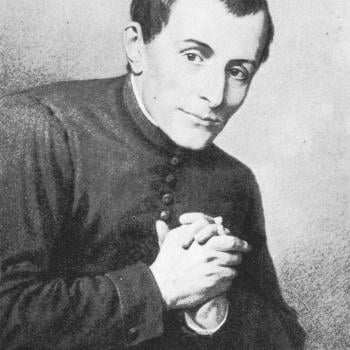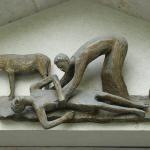When I was a kid, I was taught a lot of things by rote:
- The Alphabet
- The colors of the rainbow
- The pledge of allegiance
- The Planets (although the list I learned is now outdated)
- US States and capitals
- The multiplication table
You know the drill. You are given the right information which you repeat over and over until it sticks. This approach was even used to teach me about prayer. I was taught the Lord’s Prayer in the same way, and a few other psalms and prayers as well. These set prayers formed the framework in which I approached prayer as a young child. Perhaps some of you also were taught prayers like this.
As I entered middle school, prayer became a bit more nuanced. Rather than a memorized prayer, I used a memorized formula. I was taught to pray using the P.R.A.Y. acronym.
P- Praise (tell God how great God is)
R – Report (tell God about what’s been going on in your life both good and bad)
A – Ask (tell God your prayer requests)
Y – Yield (spend time handing over your life and circumstances to the will of God)
Both prayers and formulas can be VERY useful, but they are only tools to help people reach the heart of prayer, which is about connecting people with God. There are many other tools that can help people pray. One of the challenges of learning how to pray is learning to expand your tool box and be attentive to where God might be leading you to pray. As you grow older prayer forms that might have worked well at one point in your life, may give way to new ways of meeting with God.
There is no “right” way to pray for everyone, but there might be a “right” way to pray for you.
Not every prayer form will work for everyone, a rule that I have learned to live by is “pray how you can, not how you can’t” they key thing is that you are praying. As much as I would love to pray the seven hours of the divine office every day, like monks and religious do, I simply don’t have the time. It doesn’t make me any less holy or effective, it simply means my own prayer life has to fir the vocation God has given me.
The “right” way to pray is the way that connects you with God right here and right now.
A helpful way I have found to keep that connection growing is to have a large Tool Box of prayers. Having a large tool box of prayers means that you are familiar with a wide variety or prayer techniques. None of these constitute a singular right way to pray but each of them might help you connect with God in a richer and more powerful way.
Below I have included a list of prayer tools that you might want to check out. Take a look at one or two that you haven’t tried, and brush up on one that you are familiar with.
An incomplete Prayer Tool Box
- Lectio Divina – This form of prayer helps people to prayerfully read and meditate on the scriptures. It leads people through different stages of meaning each focusing on different ways to connect with God. I wrote this article about why I need it in my own life.You can also check out this video by Fr James Martin about how to do it.
- Divine Office – Also called the Liturgy of the Hours, this form of prayer holds a special pride of place in the Catholic church. Vatican II calls it the canticle of divine praise that the whole church joins in proclaiming with Christ (Sacrosanctum Concilium, 83). To pray the Divine Office is to join in that corporate declaration of God’s Glory. Here is an article I wrote about why I love to pray the Divine Office. I use the print volume “Christian Prayer” You can also read them Online at Universalis or DivineOffice.org.
- Rosary – The rosary is one of the most popular prayer forms in the Latin rite of the Catholic Church. It’s a simple, portable, scripture oriented form of prayer that can be learned quickly and prayed anywhere. It’s one of my favorite forms of prayer. Here is a video that gives my own “Top ten” reasons for praying the Rosary. If you don’t know how to pray the Rosary and want to learn check out out this PDF.
- Fasting – The Scriptures are full of people who fast as part of their prayer lives. It is a normative practice for Catholics at certain times in seasons of penetance, but there are many Christians who make fasting a regular part of their lives. Here is an article I wrote that goes over the basics of fasting.
- Stations of the Cross – The stations of the Cross are a practice that seeks to allow people to take a mini-pilgrimage anywhere. Most Catholic Churches will have the stations posted in the sanctuary and many Christians find it to be a powerful way to pray, particularly during lent. If you’ve never prayed the stations you can print out this guide and take it with to any Catholic church, they will probably have stations posted that you can follow along with. You can also follow along with this meditation anywhere.
- Devotionals – many people find it useful to use devotional materials to help kick start their prayers every day. There are countless books that offer devotional materials geared toward all sorts of people. I personally like this webpage, which offers reflections based on the daily mass readings, or this podcast of daily reflections by Pope Benedict.
- Centering Prayer – This practice connects people to the contemplative life of the church in a simply, yet deeply profound way. I have found centering prayer to be one of the prayer practices that has had one of the most profound impacts on my life with God. This quick introduction to the prayer gives you the basic mechanics of the prayer, but if you want to understand it better I highly recommend the book Centering Prayer by Basil Pennington. You can also watch this video here.
- The Jesus Prayer – This ancient prayer seeks to draw the practitioner into constant prayer by the frequent recitation of the prayer “Lord Jesus Christ, Son of God, have mercy on me, the sinner.” If is one of the foundational practices of Eastern Christian spirituality. If you are interested in learning more about the prayer I wrote a little booklet on it which you you can read here.
- Novenas – This is the practice of taking nine days in a row to pray in a special way. Many Catholics find praying novenas to be a powerful way to pray during special periods in their lives and in the life of the church. There are many special ways and times that people use to pray Novenas. Here is a list of a number of them.
- Examination of Concise – This is a form of prayer in which one takes time to think about their day and review what has happened with the help of the Holy Spirit. Here is a video about it. You can also print off this guide and go through it yourself.
- Taizé – This is a form of prayer that focuses on silence, scripture, and simple music. It often utilizes religious symbols and images to help direct a group in contemplating God’s presence. This is a prayer form that is often done in a group, so in order to participate in this form of prayer you would need to track down a church that offers a Taizé service. Here is a video of one of the services.
- Ignation Contemplation – This prayer form focuses on re-imagining scripture as if you were there. You can see a video introducing it here.













